Ngorongoro Crater Tanzania
Ngorongoro crater is one of the world largest intact volcanic Caldera which formed some 3 million years ago when a giant volcano exploded and collapsed. The Ngorongoro crater sinks to a depth of 610 meters and with the base area covering 260 square kilometers. Apart from the main caldera Ngorongoro also has two volcanic craters the Olmoti and Empakai. Ngorongoro crater is a sanctuary for thousands of wildlife species found within the area. The crater offers a haven for enthusiasm approximately twenty five thousand large animals most ungulate live in the crater. It is the best place in Tanzania to see the BIG FIVE animals.
A health population of black rhino and some of the largest task elephants left in Africa today are the price spot but crater is home to strong population of lions, leopard and hyenas. There are also good herds of wildebeest buffaloes and zebra.
Ngorongoro Conservation Area
Ngorongoro Conservation area is popular for large annual animal migration comprises of over 2 million mammals mostly the wildebeest, zebra and gazelles. From December to March of every year herds of these animals use to reside in the for calving. The grass in these areas are said to have sufficient nutrients and minerals used to build strong bones and for the calve in preparation for long trip toward north in Serengeti and Maasai Mara. The grass plains overlap between the Ngorongoro conservation area and Serengeti National Park.
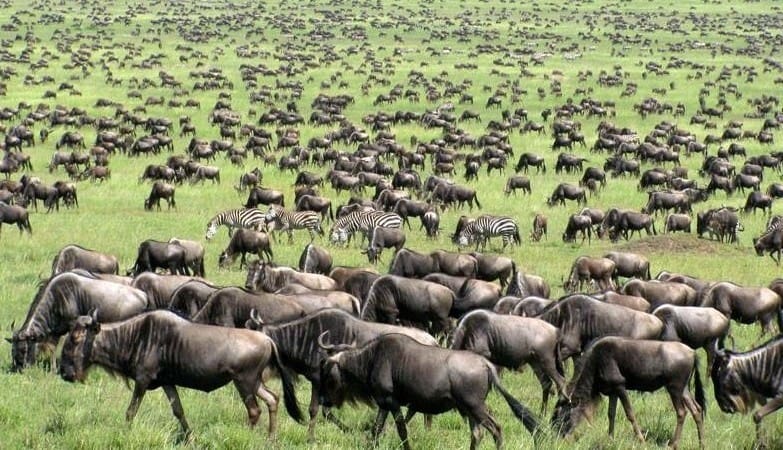
The mixture of forest, cannon, grass land plains, lakes and marshes provide habitats for a wide range of bird life. Over 500 species of birds have recorded within Ngorongoro conservation area. Within Ngorongoro you will meet with happy, strong and cultural people the maaasi . Ngorongoro conservation area is the only site in the world with the high concentration of wildlife living with human communities. About two hundred years ago the Maasai arrived and have since colonized the area in a substantial numbers. Their traditional ways of life allow them to live in harmony with the wildlife and the environment.
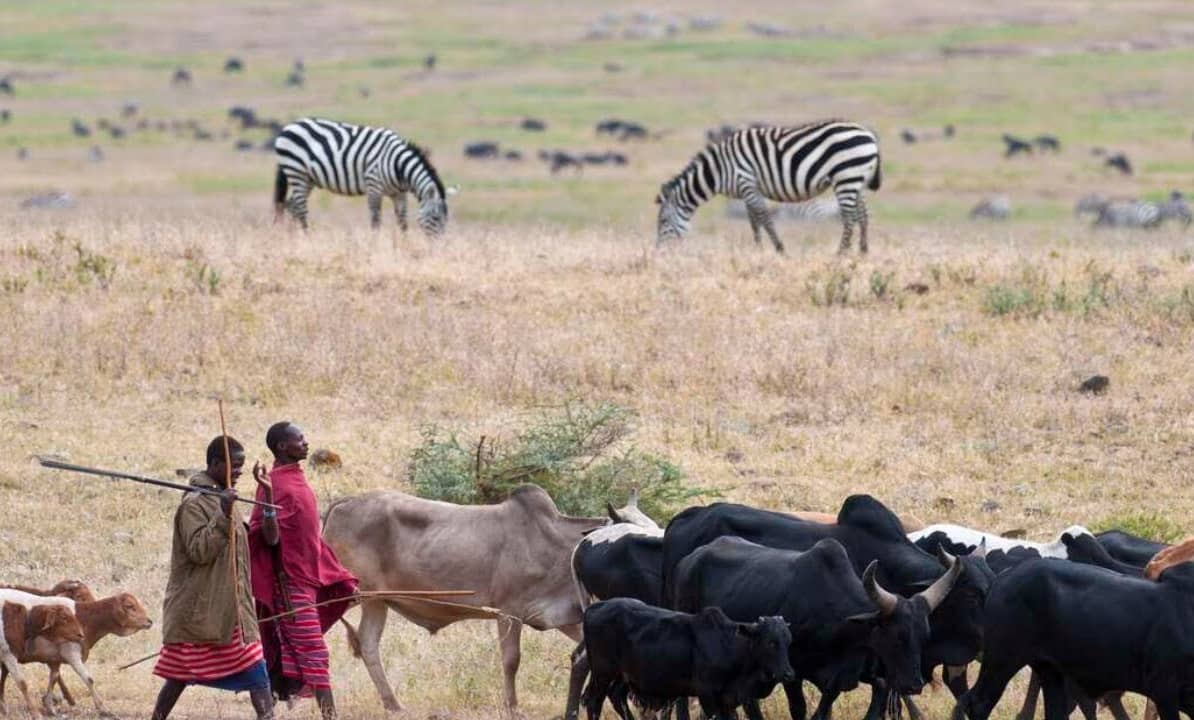
The crater is just one part of a much larger area of interrelated ecosystem. Miracle shifting sand and Olkarien gorge are very beautiful features found in Ngorongoro Conservation Area. This remarkable black dune composed of volcanic ash from Oldoinyo Lengai is being blown slowly west wards across plains at the rate of about 17 meters per year some 9 meters high and 100 meters long and it is curved. And Olkarien gorge is ecologically important because it is a vital nesting site of the Ruppell’s Griffon Vulture.
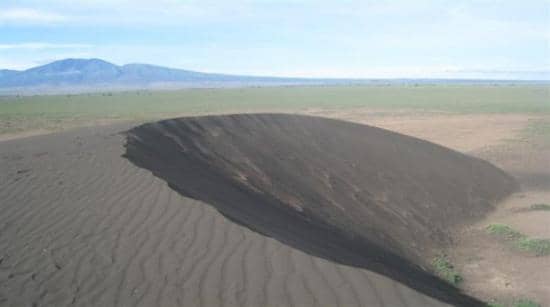
Olduvai Gorge is a world famous archeological site in Ngorongoro Tanzania and it is widely regarded as the cradle of the mankind. It is one of most important pre historical sites in the world. Olduvai Gorge carries some of the world oldest evidence of the remains of the earliest human. It is here where Marry and Luis Leaky un-earthed the first world early dated artifact and fossils of the earliest human include Zinjanthropus skull, early stone tools, hormal erectus and the larger brain hominy the proceeded the earliest modern human. Recently Ngorongoro in partnership with the European Union constructed one of the largest on site museum in Africa.
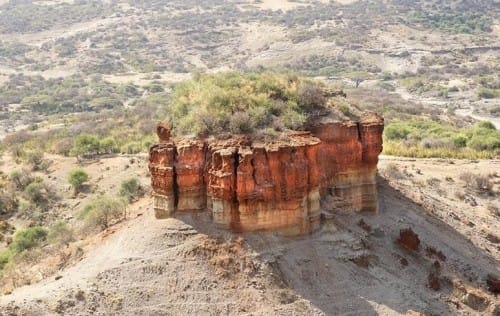
The museum was designed to resemble the cultural Maasai bomas and uphold the traditional maasai architecture style founding many community resided by the maasai people.
Animals in Ngorongoro Crater
Ngorongoro Crater is the home to about 30000 animals, almost half being wildebeest and zebra. Other common animals are Buffalo, elephant, hippo, hyena, jackal, lion, ostrich, serval, warthog, bushbuck, eland, hartebeest, reedbuck, waterbuck, and huge herds of both Grant’s and Thomson’s gazelle are easily seen on the crater floor.
Ngorongoro crater has good numbers of black rhino which now approach 20 individuals and make it be among the few places in East Africa region where visitors can easily see these rare creatures. During the game drive in the Ngorongoro crater, leopard can also spotted on the trees of Elerai forest. Visitors may also spot cheetah on the plains withing the crater while Large herds of giraffe lives on the rim of the crater and will be seen on the drive to Olduvai Gorge and the Serengeti.
There are over 550 recorded species of birds in the Ngorongoro Conservation Area and the Crater which some are residents and others are migratory. Lake Magadi, a salt lake on the floor of the crater, is often inhabited by thousands of lesser flamingos and other water birds. The crater is also bosting other species of bird which exceed for more than 100 species of birds which found in Serengeti National Park. The most common birds in Ngorongoro crater are Ostriches, Kori bastard, secretary bird, open billed stork, the great white pelican, king fischer’s, superb starling, lovebird, Hamerkop, Augur buzzard and many more. These birds can also be observed around Lake Ndutu and in the Empakaai Crater Lake.
Vegatations Distribution
The Ngorongoro Conservation Area where the crater is located covers more than 8000 sq km and it bordered with Lake Eyasi in the southwest and the Gol Mountains in the north. The centre of the Ngorongoro Conservation is estimated to be the Olbalal Swamp and the arid Olduvai Gorge.
The Ngorongoro crater highlands on the Eastern side receives 800–1200 mm of rain a year and is covered largely in montane forest, while the less-steep west wall receives only 400–600 mm; this side is grassland and bushland dotted with Euphorbia bussei trees. The crater floor is mostly open grassland with two small wooded areas dominated by Acacia xanthophloea.
Things to Do in Ngorongoro
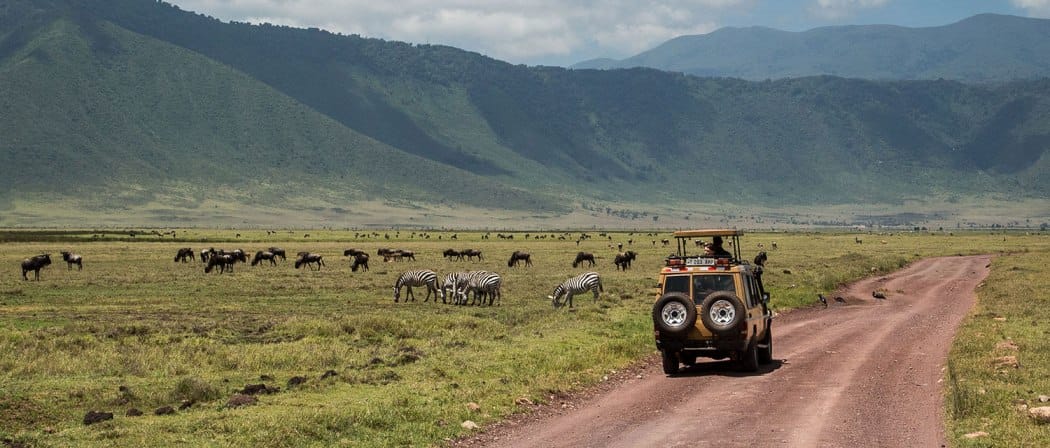 Ngorongoro Crater safari is the most interesting part of the tour to Ngorongoro Conservation Area that one should not miss. A day Ngorongoro crater safari involves drive down the 600 crater rim to floor through the zigzag roads. During game drives here you will see a number of wildlife includes the BIG FIVE which are Elephants, lions, black rhinos, buffaloes and leopards. Other common animals that your driver guide will help to spot include zebras, wildebeests, elands, hippos, Thomson’s and Grant’s gazelles, jackals, hyenas and baboons. You will also get the chance to spot various birds species since the crater host over 500 species of birds. Among the common birds include the flamingoes, ostriches, guinea fowls, grey crowned cranes, yellow billed storks, kori bustards, herons, white pelicans, plovers, black winged lapwing, secretary birds, bee eaters, martial eagles, , kingfishers, woodpeckers, falcons, shrikes and many more.
Ngorongoro Crater safari is the most interesting part of the tour to Ngorongoro Conservation Area that one should not miss. A day Ngorongoro crater safari involves drive down the 600 crater rim to floor through the zigzag roads. During game drives here you will see a number of wildlife includes the BIG FIVE which are Elephants, lions, black rhinos, buffaloes and leopards. Other common animals that your driver guide will help to spot include zebras, wildebeests, elands, hippos, Thomson’s and Grant’s gazelles, jackals, hyenas and baboons. You will also get the chance to spot various birds species since the crater host over 500 species of birds. Among the common birds include the flamingoes, ostriches, guinea fowls, grey crowned cranes, yellow billed storks, kori bustards, herons, white pelicans, plovers, black winged lapwing, secretary birds, bee eaters, martial eagles, , kingfishers, woodpeckers, falcons, shrikes and many more.
After enjoying your picnic lunch in one the picnic site you will then ascend the crater rim and continue to other place.
a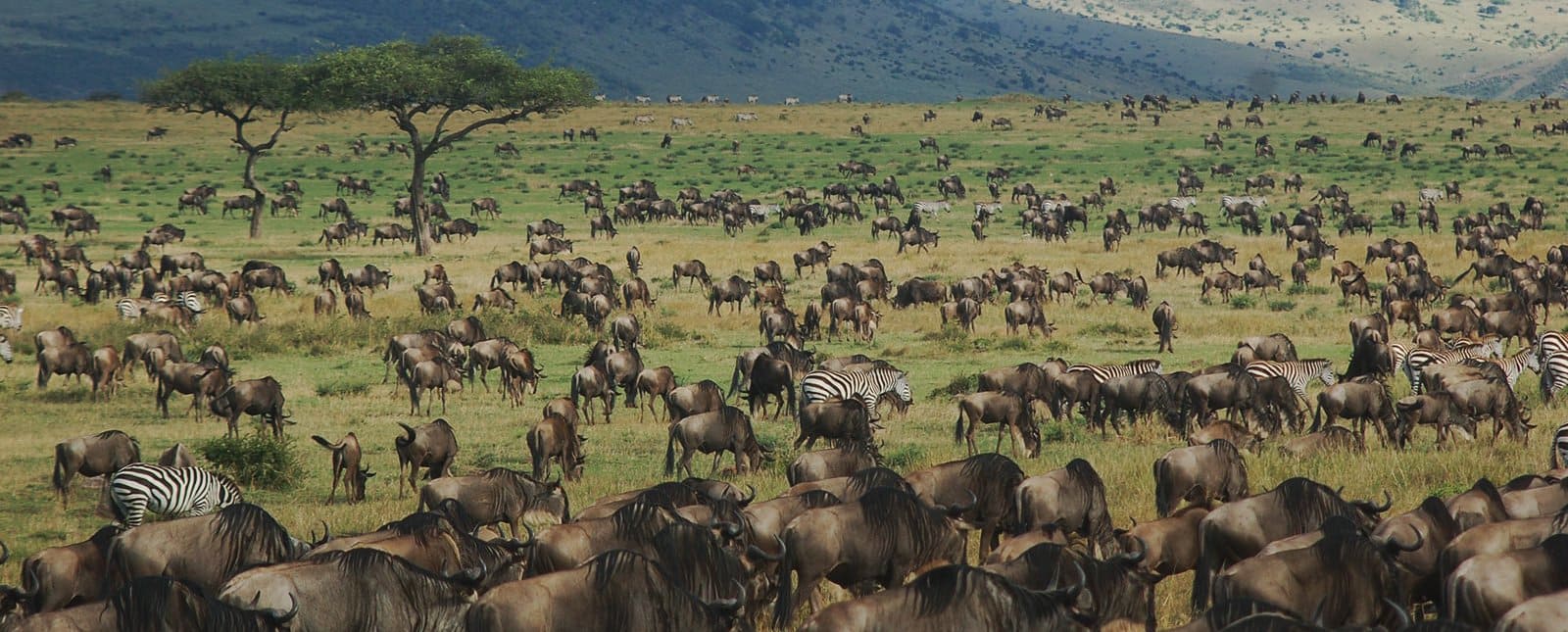 Enjoy the game viewing in Ndutu plains one of the game spectacular area in Ngorongoro Conservation Area. This area is teaming up with wildlife year round with peak season in December to April when the migration herds wander the area. The best place to conduct game drives are the areas surrounding Lake Ndutu. Here you will observe large herds of wildebeest and Zebra which are attracted by the seasonal rains. It is this area which is the calving site for wildebeest. During game drives you will see them give birth to countless calves. Predators such as lions, hyenas, cheetah and many others are also following the herds of migrations and can be seen stalking and killing during game drives.
Enjoy the game viewing in Ndutu plains one of the game spectacular area in Ngorongoro Conservation Area. This area is teaming up with wildlife year round with peak season in December to April when the migration herds wander the area. The best place to conduct game drives are the areas surrounding Lake Ndutu. Here you will observe large herds of wildebeest and Zebra which are attracted by the seasonal rains. It is this area which is the calving site for wildebeest. During game drives you will see them give birth to countless calves. Predators such as lions, hyenas, cheetah and many others are also following the herds of migrations and can be seen stalking and killing during game drives.
Ngorongoro Crater Rim Trek: The walking safari include guided trek along the crater upper rim which has dense forest. The rim is full of variety of birds such as chested bee eater, European roller, olive sunbird and martial eagle. During the trek you can also see the leopards as they also live in the forest. This half day trek can be done a day before the Ngorongoro crater tour so as to get more exposure of the area.
Sources of Water in Ngorongoro
The Munge Stream drains Olmoti Crater to the north, and is the main water source draining into the seasonal salt lake in the center of the Ngorongoro Crater. This lake is known by two names: Makat as the Maasai called it, meaning salt; and Magadi. The Lerai Stream drains the humid forests to the south of the Crater, and it feeds the Lerai Forest on the crater floor – when there is enough rain, the Lerai drains into Lake Magadi as well. Extraction of water by lodges and NCA headquarters reduces the amount of water entering Lerai by around 25%.
The other major water source in the crater is the Ngoitokitok Spring, near the eastern crater wall. There is a picnic site here open to tourists and a huge swamp fed by the spring, and the area is inhabited by hippopotamus, elephants, lions, and many others. Many other small springs can be found around the Ngorongoro crater’s floor, and these are important water supplies for the animals and local Masaai, especially during times of drought.
Aside from herds of zebra, gazelle, and wildebeest, the Ngorongoro crater is home to the “big five” of rhinoceros, lion, leopard, elephant, and buffalo. The Ngorongoro crater plays host to almost every individual species of wildlife in East Africa, with an estimated 25 000 animals within the crater.
